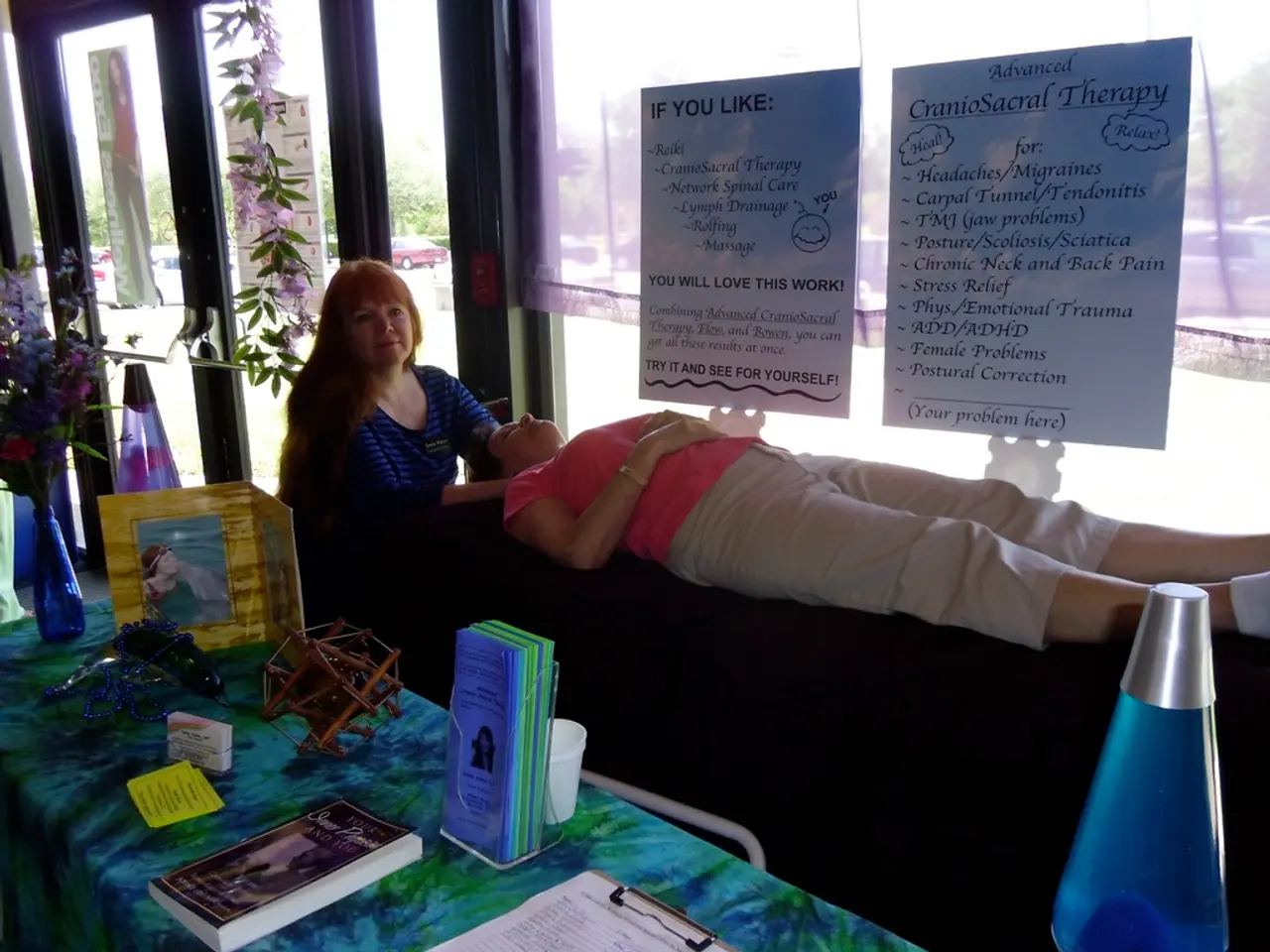Treatment options for carpal tunnel syndrome: Key factors to consider
Acupuncture, a traditional Chinese medicine practice, is sometimes considered as a treatment option for Carpal Tunnel Syndrome (CTS). However, the evidence supporting its effectiveness is limited and of low quality.
What is Carpal Tunnel Syndrome?
CTS is a type of neuropathy or nerve damage that affects the median nerve, causing symptoms such as tingling, numbness, and weakness in the hand and arm. It accounts for about 50% of all neuropathies.
Doctors often recommend forms of physical therapy, wrist splints, nonsteroidal anti-inflammatory drugs, corticosteroids, and surgery to treat CTS. In severe cases, surgery aims to relieve pressure on the median nerve by making an incision in the wrist and cutting the transverse carpal ligament to enlarge the carpal tunnel.
Acupuncture: The Technique and Its Benefits
Acupuncture involves inserting thin pins or needles through the skin, targeting specific areas called acupuncture points. Practitioners may use various psychological or physical approaches, such as acupuncture and tai chi.
Research has shown that acupuncture can provide lasting relief from symptoms of CTS, improve nerve function in the area, and cause an anti-inflammatory response. However, definitive clinical proof demonstrating symptom improvement in CTS is currently lacking.
Mechanistically, acupuncture may relieve nerve pain by releasing endorphins, reducing inflammation, and improving local blood flow, which could theoretically benefit CTS-related nerve symptoms.
The Evidence for Acupuncture in CTS Treatment
A 2018 Cochrane review concluded that acupuncture and laser acupuncture probably have little or no short-term benefit on CTS symptoms compared to placebo or sham acupuncture. All included studies had unclear or high risk of bias, and the overall evidence was rated as low or very low quality.
Additional recent reviews note that acupuncture is used as a conservative treatment option, but acknowledge that more robust evidence is needed to confirm its effectiveness.
When to Consider Acupuncture for CTS
In mild-to-moderate CTS cases, acupuncture can be an effective alternative to medical treatments. It may be a helpful part of a varied treatment plan that includes other methods such as physical therapy and medications for inflammation.
A practitioner will insert the pins into the acupuncture points corresponding to the affected hand and wrist, approximately 0.25 to 0.5 inches deep. The points are located on the medial surface or inside of the forearms. The point known as pericardium 7 is the one reported for CTS treatment, along with pericardium 6, large intestine 11, and other points around or corresponding to the area.
It is important to note that some people may not respond well to acupuncture or their symptoms may not improve with treatment. A person should work closely with a doctor to determine the most effective treatment for their CTS symptoms.
A study found that laser acupuncture, which applies laser light to acupuncture points, had short-term effects in relieving mild-to-moderate CTS symptoms without inserting needles into the skin.
In summary, while acupuncture is a considered conservative treatment for CTS in some clinical contexts, current high-quality evidence does not firmly support its efficacy in improving CTS symptoms, and further rigorous research is needed to clarify its role.
- Carpal Tunnel Syndrome (CTS) is a form of neuropathy that affects the median nerve, causing tingling, numbness, and weakness in the hand and arm, accounting for about 50% of all neuropathies.
- Doctors typically recommend physical therapy, wrist splints, NSAIDs, corticosteroids, and surgery for treating CTS, with surgery aiming to relieve pressure on the median nerve.
- Acupuncture, a traditional Chinese medicine practice, is sometimes considered as a treatment option for CTS, but the evidence supporting its effectiveness is limited and of low quality.
- Acupuncture involves inserting thin needles into specific acupuncture points on the body, which may help relieve nerve pain and improve local blood flow.
- A 2018 Cochrane review concluded that acupuncture and laser acupuncture have little or no short-term benefit on CTS symptoms compared to placebo or sham acupuncture.
- Acupuncture may be more effective in mild-to-moderate CTS cases as part of a varied treatment plan that includes physical therapy and medications for inflammation.
- A study found that laser acupuncture, which applies laser light to acupuncture points, had short-term effects in relieving mild-to-moderate CTS symptoms without inserting needles into the skin.
- While acupuncture is considered a conservative treatment for CTS in some clinical contexts, high-quality evidence does not firmly support its efficacy in improving CTS symptoms, and further rigorous research is needed to clarify its role.
- Apart from CTS, acupuncture and other therapies and treatments can also be used to manage various medical conditions such as sinus infections, chronic kidney disease, type 2 diabetes, cancer, eye health issues, mental health problems, skin conditions like psoriasis, and chronic diseases like rheumatoid arthritis.
- For overall health and wellness, incorporating fitness and exercise, nutrition, and skin care into one's lifestyle can significantly improve cardiovascular health, support physical and mental well-being, and maintain or improve eye health.
- In some cases, alternative treatments like CBD oil may be used to manage pain or inflammation associated with certain medical conditions or skin conditions, but its long-term effects and potential interactions with other medications should be carefully considered and discussed with a healthcare provider.




